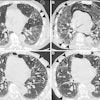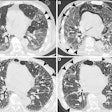Smokers' willingness to kick the habit depends on how bad their CT screening results are, according to a new study in JNCI: Journal of the National Cancer Institute.
Smoking history data on nearly 15,500 participants in the massive National Lung Screening Trial (NLST) show that smokers quit in large numbers when the CT screening news is bad -- a large nodule suspicious for lung cancer -- but are less willing to give up the habit when screening results are positive but unlikely to be lung cancer. And they often keep smoking like chimneys when the screening results are negative for suspicious findings.
"Our study demonstrates that in an adjusted analysis, screening result is an important and significant predictor of subsequent smoking, and that smoking was inversely associated with severity of the screening result," wrote Martin Tammemägi, PhD, and colleagues from Brock University in St. Catharines, Ontario.
Screening results might offer a "teachable moment" during which smoking behaviors might be changed, the team wrote (J Natl Cancer Inst, May 28, 2014). The study aimed to look at the impact of screening results on smoking behaviors over time; previous studies were limited to smoking behavior within trials.
The study used statistical models to predict annual smoking cessation rates in 15,489 individuals who were current smokers when they entered the NLST, not including those who were diagnosed at follow-up with cancer (4.8% of those analyzed). The researchers analyzed all the associations between cancer screening results and smoking cessation over the trial period.
The results showed that smoking cessation was strongly associated with the degree of abnormality seen in the previous year's CT scan results (p < 0.0001). Compared with participants whose scans were normal, individuals were less likely to remain smokers if the past year's scan showed a significant abnormality that was one of the following:
- Not suspicious for lung cancer (odds ratio [OR] = 0.811)
- Suspicious for lung cancer but stable from previous screens (OR = 0.785)
- Suspicious for lung cancer in a new or changed finding from a previous screen (OR 0.663)
The effect was so persistent that differences in smoking prevalence could be seen for up to five years after the last scan. Other factors that encouraged continued smoking included younger age, lower education, being unmarried, lower body mass index (BMI), and history of heavier smoking intensity and longer duration, as well as exposure to secondhand smoke, the authors noted.
In an accompanying editorial (J Natl Cancer Inst, May 28, 2014), Dr. Stephen Deppen and colleagues from Vanderbilt University Medical Center in Nashville lauded the study, but wrote that more information is needed to determine if smokers with a negative screening result also can be encouraged to quit.
"The observed 26% reduction in smoking over the five years among those with normal scans is similar to expected smoking reduction in the general population of smokers and suggests little to no decrease in smoking cessation after a normal radiograph," they wrote.



















